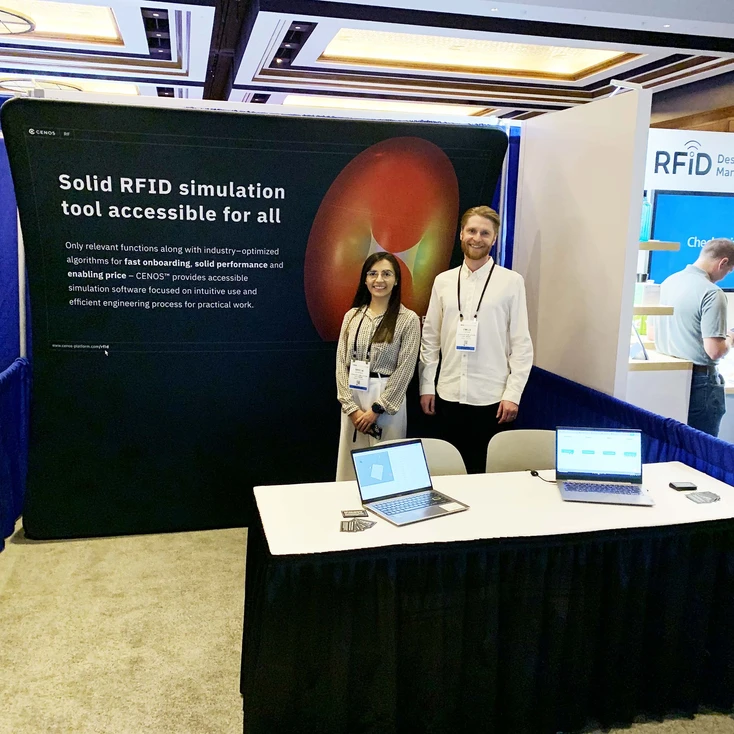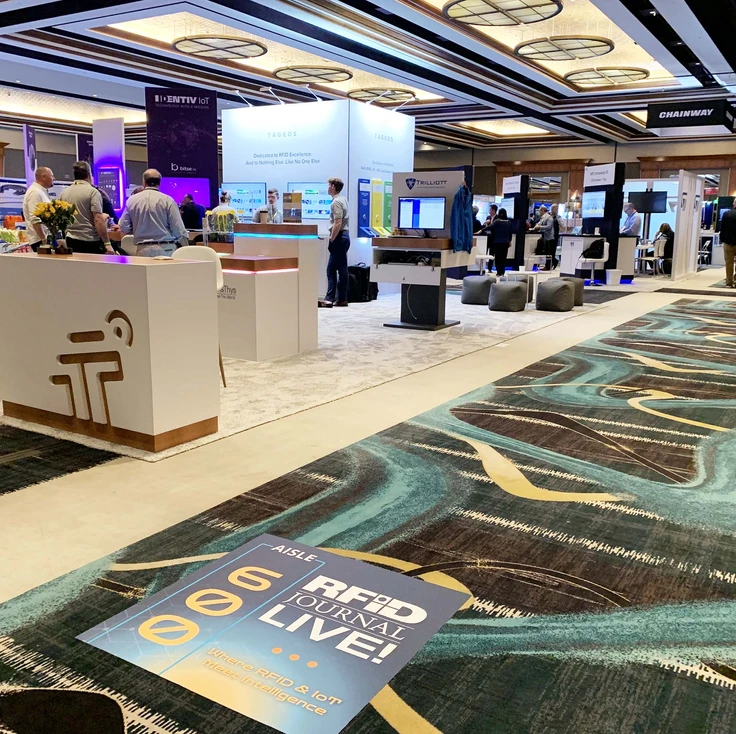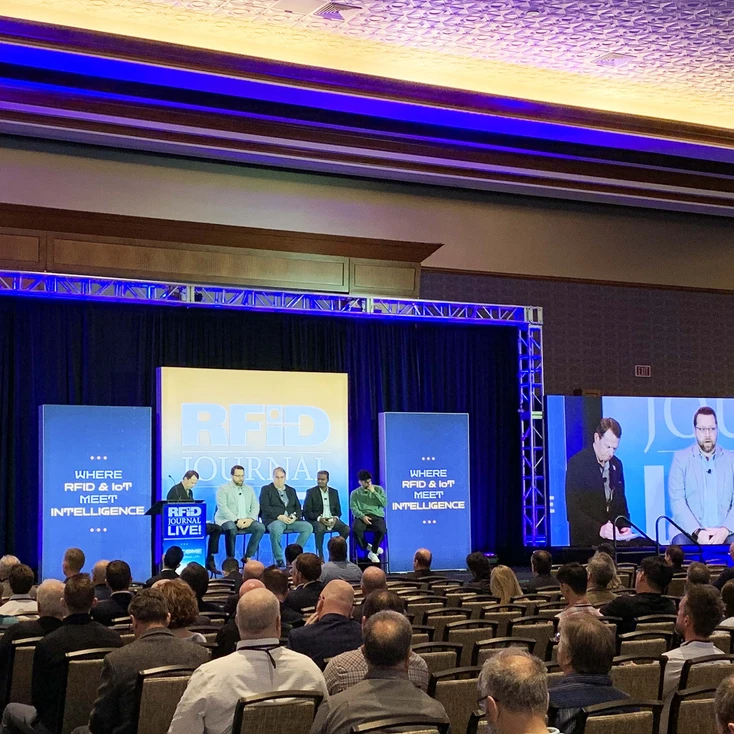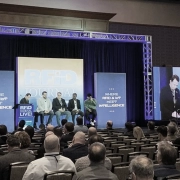Key takeaways from RFID Journal LIVE!
The RFID Journal LIVE! (April 9-12, 2024) in Las Vegas brought together industry leaders and innovators.
It’s the world’s biggest RFID event and we at CENOS are extremely proud to have participated in that expo. We are sure that you saw us in booth nr 111 with Emils Vjaters and Bricia Alvarado from CENOS.

Key takeaways from RFID Journal LIVE!

Key takeaways from RFID Journal LIVE!
We were there to dive into the latest advancements in RFID (Radio-Frequency Identification), IoT (Internet of Things), and AI (Artificial Intelligence) technologies.
But also, we were there to introduce the capabilities of the CENOS simulation software, and how it can support the initiatives of RFID technology.
Here are the main points we extracted from the event:
The basics and applications of RFID technology
- Understanding RFID: A big part of the conference was about different RFID tools – different readers and antennas – and how they are used in places like warehouses to keep track of items more efficiently. Smart and automated warehousing is definitely the current focus in the industry.
- Sustainability with RFID: There was much talk about how RFID helps in keeping track of product life cycles to support recycling and reuse, especially in the European Union, which aims to be climate-neutral by 2050 using tools like Digital Product Passports.
- RFID in banking: For instance, there was an insightful topic about how RFID tech helps in the banking sector by making the transfer of cash between banks and shops more secure and efficient, using robots that sort cash using RFID tags. RFID technology in the finance sector is a big thing.
RFID making a difference in specific industries
- In healthcare: Hospitals like Loma Linda are using RFID to track medical products, ensuring that all tools and medications are safe and in good condition, which significantly improves patient care.
- In retail stores: RFID helps stores manage their inventory better. It gives them the ability to see what’s in stock in real-time, making sure shelves are always filled and customers find what they need.
- Augmented reality and RFID: The event covered hot topics about cool new AR glasses developed by MIT that can read RFID tags to help users find items around them which could be really helpful in big spaces like warehouses or big stores.
How AI is making RFID even better
- AI in asset management: Siemens Healthineers is using AI with RFID to keep track of hospital equipment down to which room it’s in, which helps in saving time and money previously spent searching for these assets.
- Smart farming and health monitoring: AI is used to analyze data from RFID and sensors to better manage farm conditions or predict health issues, improving quality and efficiency. It’s all about automating things but also keeping it safe and controlled.
Other interesting insights
- Better integration: Engineers should look into how RFID can be better combined with existing tech to make smarter systems. For example, integrating RFID with real-time data systems in warehouses helps in managing inventory more effectively.
- Sustainability focus: RFID helps track products from start to finish, making recycling easier. Like how the European Union uses RFID for their Digital Product Passports to help with their climate goals.
- Real-time tracking: The future of managing items is in real-time tracking, where RFID and AI together offer pinpoint accuracy and efficiency. For instance, RFID systems in retail not only track inventory but also enhance customer shopping experience by ensuring products are always available.
- Meeting regulations: As laws around environmental and safety standards tighten, RFID helps companies keep up by providing accurate tracking and data. For example, hospitals use RFID to ensure medical devices are not only tracked but also maintained and safe for use.
Key takeaways for engineers and manufacturing companies
RFID Journal LIVE! 2024 was all about how RFID, IoT, and AI are merging to create smarter, more efficient systems that can transform how we manage assets, track inventory, and even improve sustainability across different sectors.
For engineers and manufacturers, keeping up with these trends is crucial for staying ahead in today’s fast-moving tech landscape.
Our mission in CENOS is to provide engineers a simulation software that can support RFID product development, faster hardware design, and lower cost of R&D.
- Using simulation software speeds up the creation of new groundbreaking solutions by letting engineers test ideas quickly.
- By cutting down on the need for physical models, simulation can drop research costs a lot—think less spending on materials and people’s time.
- With CENOS you can skip building countless prototypes for precise computer models. This means faster results and better final products.
- With simulation, engineers can try out and tweak designs on their own, without waiting on others. This makes the whole development process faster and more creative.
Using RFID with simulation software like CENOS is smart. It not only saves time and money but also makes businesses more efficient and ready for the future.
So, if you’re in engineering or manage a manufacturing company, getting into RFID and simulation software is definitely worth it!

Key takeaways from RFID Journal LIVE!

Key takeaways from RFID Journal LIVE!


